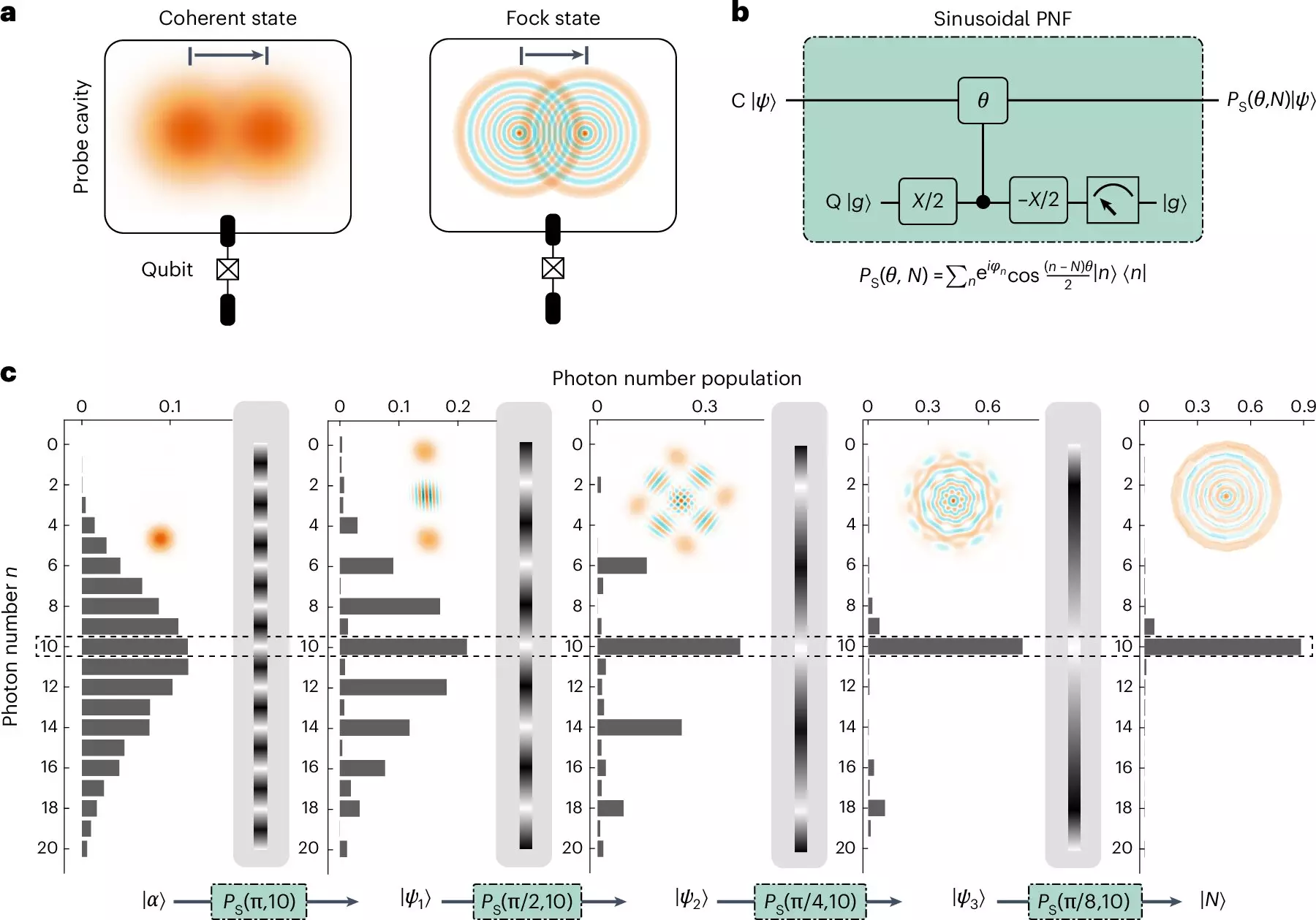In the intricate realms of science and technology, the quest for precision is paramount. High-precision measurements are not merely a luxury; they are foundational to breakthroughs across various disciplines, particularly in physics. With the advent of quantum mechanics, particularly quantum-enhanced metrology, researchers are beginning to unlock new dimensions of accuracy that were previously deemed unattainable using classical methods. This exploration revolves around the manipulation of non-classical states, leading to a potential evolution in how measurements are realized and understood.
Traditional measurement techniques often struggle with limitations imposed by environmental noise and systematic errors. However, by employing quantum states—specifically non-classical states such as Fock states—scientists can harness peculiar properties that offer enhanced sensitivity and precision. The ability to utilize large photon number states significantly augments the capability to detect subtle changes in electromagnetic fields. The latest research by the International Quantum Academy in collaboration with prestigious universities has brought forth a new methodology to generate large Fock states, paving the way for advancements in quantum-enhanced metrology.
Pioneering Research and Methodologies
The recent publication in Nature Physics highlights a groundbreaking approach to generating Fock states with nearly 100 photons, a remarkable leap from previous capabilities. Central to this innovation are the techniques employed to produce high-precision measurements of weak microwave fields. By leveraging the unique interference patterns of microwave Fock states in superconducting cavities, researchers can detect even the slightest shifts induced by microwaves with unprecedented accuracy. The underlying philosophy of this research hinges on the principle that as the number of photons increases, the fineness of the resultant interference fringes improves, allowing for more detailed and precise measurements.
The methodology devised by the researchers involves two types of photon number filters (PNFs): sinusoidal and Gaussian. The sinusoidal PNF is bolstered by a conditional rotation within a Ramsey sequence, which periodically filters specific photon numbers based on the state of an ancillary qubit. Meanwhile, the Gaussian PNF employs a qubit flip pulse characterized by a Gaussian envelope, refining the photon number distribution to concentrate around the desired Fock state. This dual-filter approach marks a substantial enhancement in the efficiency of generating large Fock states, achieving logarithmic scaling in circuit depth relative to photon number.
This innovative technique is not merely a theoretical achievement; it has profound practical implications. The approach’s hardware efficiency makes it a frontrunner in the quest for quantum-enhanced metrology. By facilitating the generation of large Fock states, the researchers have laid the groundwork for a system capable of achieving metrological gains significantly above classical limits—an advancement evidenced by the impressive gain of 14.8 dB in initial tests.
Such progress opens doors to a multitude of applications. From high-precision radiometry to the detection of weak forces and dark matter, the findings promise to enrich both fundamental research and technological applications. The researchers, led by Yuan Xu, express optimism about exploring further refinements in coherence performance and expanding their capabilities to generate even larger Fock states. This endeavor aligns with broader scientific goals, wherein increased precision can significantly advance our understanding of quantum phenomena.
The field of quantum-enhanced metrology stands at a pivotal moment, with the potential to redefine the limits of precision measurements. The recent advancements by the International Quantum Academy and its collaborators illustrate the tangible benefits of utilizing non-classical states in practical scenarios. As researchers continue to refine these techniques, the implications for experimental physics, technological innovation, and our grasp of the universe could be revolutionary. The journey into the quantum realm promises not just heightened precision in measurements, but also the unveiling of unknown phenomena that could reshape our scientific paradigms.


Leave a Reply